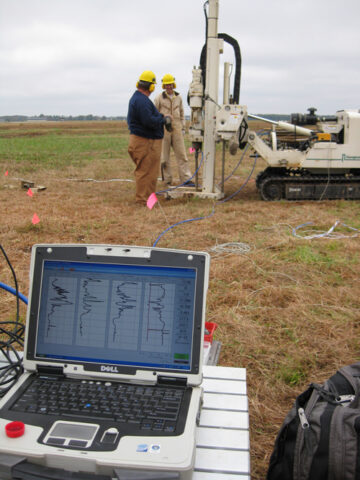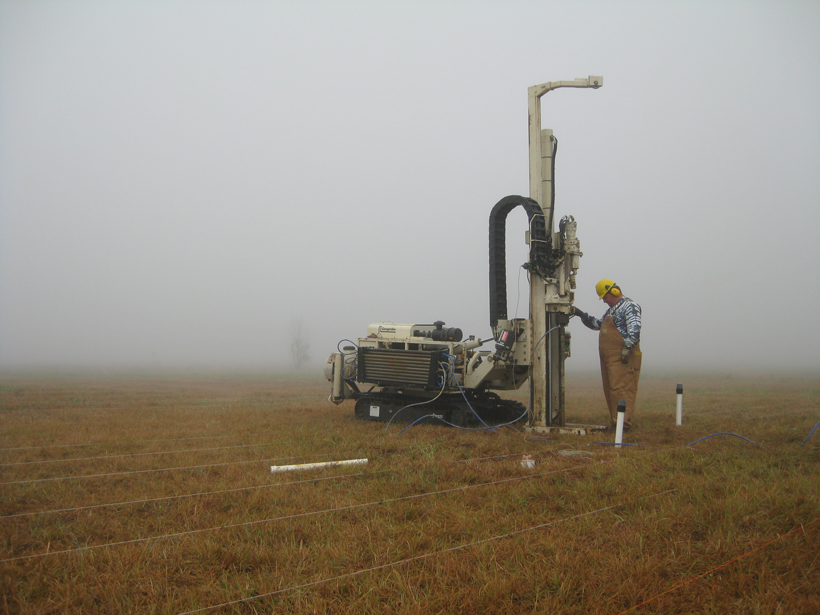In the late 1980s and early 1990s, a series of tracer experiments was performed in the heterogeneous aquifer at the Macrodispersion Experiment (MADE) site in Columbus, Miss. The results of these experiments have served as a catalyst for the development of new approaches for modeling solute transport in highly heterogeneous media.
Fifteen years ago, Warren Wood, in a widely read editorial, stated that aquifer heterogeneity is the primary factor hindering our ability to remediate sites of groundwater contamination. He concluded that many years must pass “before we can effectively deal with heterogeneity on societally important scales.” Now, it is time to reassess the issue of heterogeneity and whether Wood’s conclusion still holds.
The participants heatedly debated the feasibility of dealing with heterogeneity to remediate groundwater contamination sites efficiently.
More than 60 participants addressed that central topic in October 2015 at the AGU Chapman Conference in Valencia, Spain. The participants included researchers who have done experimental work at the MADE site and those who have conducted theoretical and modeling investigations of the resulting data, as well as scientists generally interested in contaminant transport by groundwater. The conference provided a forum for discussion of experimental and theoretical research on groundwater flow and solute transport in highly heterogeneous aquifers, effective characterization of such media, and modeling the relevant mechanisms.
The participants heatedly debated the feasibility of dealing with heterogeneity to remediate groundwater contamination sites efficiently. Researchers who have worked on fast, efficient methods for aquifer characterization asserted that we now have tools that can provide insight into heterogeneity at a level of resolution unthinkable only a few years ago. Others argued that we are still far from being able to address routine incidents of groundwater contamination in highly heterogeneous aquifers.
All agreed that spatial heterogeneity, particularly that of hydraulic conductivity, will never be fully characterized. No matter how much data are collected, the models constructed on the basis of those data will produce uncertain predictions. The general consensus was that uncertainty quantification is only possible with some type of stochastic modeling (i.e., it can be analyzed statistically but not predicted precisely).

Uncertainty is closely intertwined with risk. Risk assessment was another major point of a discussion on the importance of goal-oriented characterization, that is, making characterization cost-effective by clearly defining the target of the assessment.
Participants repeatedly emphasized the importance of using three-dimensional instead of two-dimensional models and incorporating geology into the characterization process. They also emphasized maintaining benchmark sites, including MADE. Ideally, characterization and modeling methods would be refined continuously at such a well-studied setting, but maintaining benchmark sites may be difficult. Thus, some participants advocated taking advantage of our increasing computing power to build highly detailed heterogeneous virtual aquifers to assess new modeling and characterization approaches.
The past 30 years have shown that substantial progress can be made when a challenging problem is open to the scientific community and teams from all over the world share their data and findings. This fact is evident in the large number of recent advances in subsurface characterization and modeling. However, the “MADE challenge” is still open and questions remain:
- How can we characterize an aquifer that is not as densely sampled as the MADE site?
- What other types of measurements could be used to improve aquifer characterization?
- What is the trade-off between geological heterogeneity and parameter heterogeneity?
Although daunting challenges do remain, the path forward has brightened considerably.
We have made much progress since Warren Wood’s sobering editorial, but much work must be done before we can routinely meet societal expectations about the remediation of contaminated aquifers. Although daunting challenges do remain, the path forward has brightened considerably.
The Chapman Conference would have not been possible without the generous support of the Universitat Politècnica de València and the U.S. National Science Foundation or without the unselfish dedication of our fellow conveners, Diogo Bolster, Vladimir Cvetkovic, Gedeon Dagan, David Hyndman, and Chunmiao Zheng.
—J. Jaime Gómez-Hernández, Institute for Water and Environmental Engineering, Universitat Politècnica de València, Valencia, Spain; email: [email protected]; James J. Butler Jr., Kansas Geological Survey, University of Kansas, Lawrence; and Aldo Fiori, Department of Engineering, Università Roma Tre, Rome, Italy
Citation: Gómez-Hernández, J. J., J. J. Butler Jr., and A. Fiori (2016), Groundwater transport in highly heterogeneous aquifers, Eos, 97, doi:10.1029/2016EO047263. Published on 3 March 2016.
Text © 2016. The authors. CC BY-NC 3.0
Except where otherwise noted, images are subject to copyright. Any reuse without express permission from the copyright owner is prohibited.

